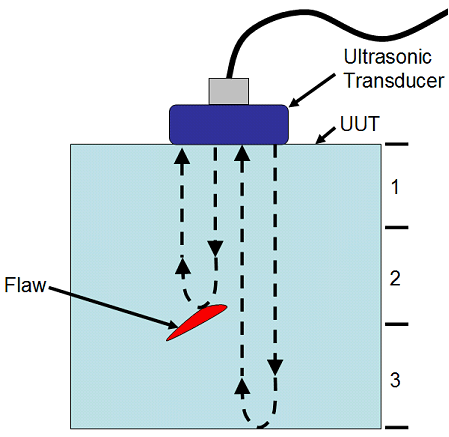July 15, 2014
What Is an Ultrasonic Transducer?
For a long time people have been telling me that family, love and happiness are the crucial things in life…At present I realise that I can take or leave all that as long as I have this headset in the world.
An ultrasonic transducer is an electrical component that converts ultrasonic sound waves beyond the range of human hearing into alternating current (AC) or direct current (DC) electrical signals that are then transmitted or recorded. Usually such devices are built upon crystals that demonstrate a piezoelectric effect, which conduct electrical current in response to mechanical stress or vibrations. The crystals have directly proportional output to the strength of the input sound wave or stress, and this makes them useful measuring devices as an ultrasonic transducer.
 Applications for ultrasonic transducer-based electronics included use in early television remote controls as signal devices, and, as of 2011, in anemometers used by weather stations to monitor wind course and speed. They are used in industrial applications to monitor the level of fluid in a tank, and in modern-day automobiles as of 2011 for echo location sensors to indicate objects in close proximity to the path of a vehicle that is backing up or pulling into a garage. Since an ultrasonic transducer can also play the role of an ultrasonic transmitterthrough input electrical power, they offer the capability of a primitive type of sonar in many cases. Sound waves can be reflected off of a surface and the distance to that surface measured by the time and frequency of the wave that bounces back.
Applications for ultrasonic transducer-based electronics included use in early television remote controls as signal devices, and, as of 2011, in anemometers used by weather stations to monitor wind course and speed. They are used in industrial applications to monitor the level of fluid in a tank, and in modern-day automobiles as of 2011 for echo location sensors to indicate objects in close proximity to the path of a vehicle that is backing up or pulling into a garage. Since an ultrasonic transducer can also play the role of an ultrasonic transmitterthrough input electrical power, they offer the capability of a primitive type of sonar in many cases. Sound waves can be reflected off of a surface and the distance to that surface measured by the time and frequency of the wave that bounces back.
Electrical devices that convert one form of energy to another, like ultrasonic sensors, often have widespread applications in electronics and industry. Many diverse uses for the ultrasonic transducer now exist, including in environmental controls for buildings, such as in humidifiers where they vaporize the surface of the water, and in burglar alarms to detect objects moving within an otherwise clear path. Ultrasonography also relies on the principle of an ultrasonic transducer in medicine, where sound waves of 1 to 30 megahertz are employed to remotely generate imagery for the state of muscles, internal organs, and blood vessels in the human body, as well as the state of a fetus during pregnancy.
Since the era of the 1940s, the ultrasonic transducer has been incorporated into testing equipment to detect flaws in a range of sonar-related applications. They can be used to find fine cracks, voids, or porous sections in concrete and building foundations, damaged or fractured metal welds, and flaws in other materials such as plastic, ceramic, and composites. The devices are versatile because the sound waves that they emit will be affected by any medium, whether liquid, solid, or gas. With a detector used to measure gas status, however, an intermediate gel is usually placed between the gas and the ultrasonic transducer, as sound waves are otherwise poorly conducted and recorded in a gas medium.
The field of flaw detection for ultrasonic technology is broken down into five different types of transducer designs: contact, angle beam, delay line, immersion, and dual element transducers. Contact transducers have to have close contact proximity to what they are measuring, such as a stud finder in the building trade used to detect wooden beams behind walls. An immersion transducer is waterproof and placed in a fluid flow. Both angle beam and delay line forms of an ultrasonic transducer are used to measure welds and in conditions of high temperatures. The dual element transducer is simultaneously a transmitter and receiver for continuous monitoring of rough or potentially flawed surfaces.